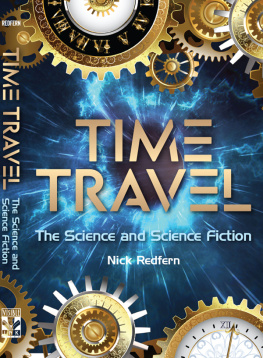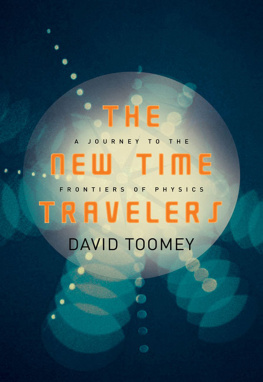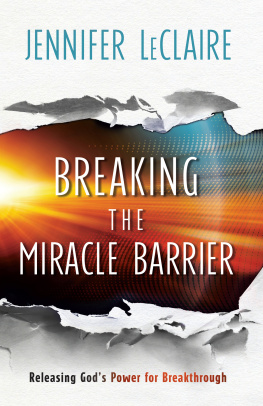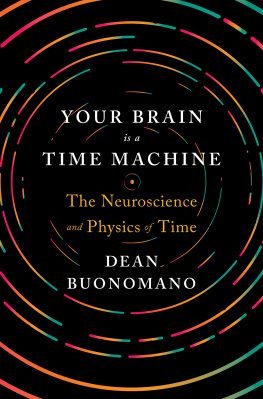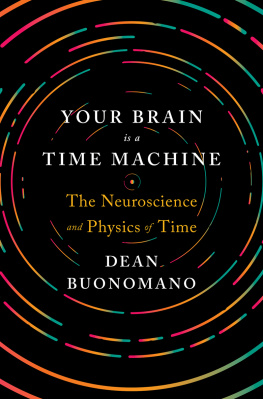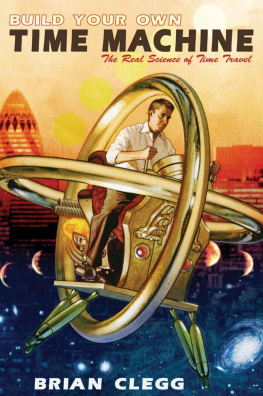All rights reserved, including the right to reproduce this book or portions thereof in any form whatsoever.
For information address Pocket Books, 1230 Avenue of the Americas, New York, NY 10020
POCKET and colophon are registered trademarks of Simon & Schuster, Inc.
who provide true support for us both.
Preface
The Day that Time
Stood Still
T he morning dawned like any other, but this was not an ordinary day. A science experiment had begun that was about to change the face of physics. It might ultimately change the entire world.
The experiment grew out of an idea first imagined seventy years earlier by two giants of scienceAlbert Einstein, who may go down in history as the father of time travel, and Indian scientist Satyendra Bose, after whom we name the boson, a particle that plays a key role in the construction of matter. Their brilliant suggestion was so advanced that it could not be tested at the time, as the technology needed to do so was not available. Not until the end of the second millennium would the means become available to a new generation of researchers.
The breakthrough experiment that took place that day created a Bose-Einstein condensate, a substance that is named in honor of the two men. This odd substance resembles a super atom with millions of particles smeared into one huge cloud of gas. What emerges has an undefined size and shape thats quite unlike other more mundane elements.
Einstein and Bose thought of creating such a condensate after a close study of a theory proposed by a colleague, Werner Heisenberg, a flawed genius who investigated subatomic space and came close to building an atom bomb for Adolf Hitler. Heisenberg proved that at the microscopic scale only one property could be precisely defined at any time. We might accurately measure momentum (a product of mass and velocity) or correctly gauge the position of particlesbut we cannot completely measure both of these things together. The better we define one property, the less certain must be our knowledge of the other. All physical measurement is irretrievably shrouded in confusion thanks to this discovery. We have had to accept that there are limits to what we can knownot just for today or tomorrow, but probably forever.
Physicists eventually acknowledged this uncertainty principle of Heisenbergs, but Bose and Einstein spotted that it provided a fascinating opportunity. If you freeze atoms down to the coldest theoretical temperaturecalled absolute zeroall motion stops and the particles making up the atom will have no velocity. This means that momentum must also now be zero, because whatever the mass, when multiplied by zero velocity, its bound to equal nothing. But if we know momentum exactly (even if it is zero), then, according to Heisenberg, we cannot know anything about location. In other words, when frozen to such bitter coldness a cloudy smudge of particles with no defined shape ought to form. This would be the condensate.
In February 1999, Lene Vestergaard Hau, a Danish scientist working at the Rowland Institute at Harvard, successfully created a Bose-Einstein condensate and shone light rays through the resulting vapor. The misty cloud behaved precisely as Einstein and Bose had predicted seventy-three years before, and that behavior was as remarkable as the two great scientists had anticipated. Its effect on light was so curious that the script for this experiment ought to have been directed by Steven Spielberg.
As the light beam passed through the cloud, its speed started to fall from the familiar 186,000 miles per second in space to an amazing 38 miles per hour as it crawled through the mist. Rays of light normally move so fast that our senses cannot see their motion, though they do get impeded slightly as they pass through solids or gases. This itself is not odd. What was extraordinary was that these light rays were no longer fast enough to circle the Earth in less than a second. They were traveling very slowly, and it was possible to imagine catching up with them. But what would happen to something that catches light? This question, which was once in the realms of science fiction, was all of a sudden quite real.
As Haus team worked to improve their method, Ronald Walsworth and Mikhail Lukin of the Harvard-Smithsonian Center for Astrophysics made successful modifications to the experiment. In January 2001, after creating another cloud of condensate, they shone two beams of light through it. These interfered with the particle waves inside the smudge, just as two stones dropped into a pond will form separate ripples. The ripples then spread out across the water and when they meet, change the wave patterns of one another.
Inside the mist of condensate the transmitted light beam moved ever more slowlyjust as Hau had shown that it would. But the second beama laserwas the key to what happened next. The team ensured that its frequency was slightly different from that of the first light beam, allowing manipulation of the interference pattern from the interacting ripples. This caused the light rays to slow beyond the levels that Hau achieved. The results were unprecedented.
Slowing light from its normal very fast speed might seem to be of mere technical interest. But its actually quite significant. Light conveys the flow of information that defines all human experience. What we see, know, or understand about the world comes from the data brought into our senses on light rays and similar waves of energy. Light, quite literally, creates time as we experience it from moment to moment. Find a way to alter lights motion and you begin to defeat the time barrier.
In the Harvard-Smithsonian experiment one of the two beams shining through the condensate acted as a flashlight to illuminate the mistmaking it transparent. The second light beam could then be observed wending its way through the freezing vapordescribing a path just like any ordinary ray of light might do when entering a room through a gap in the curtains. But this light ray was moving incredibly slowly.
Light speed, once thought to be infinite and untouchable by scientists, was now being tamed by human intervention. And in that moment a new realm of possibilities opened upincluding the keys to a time machine. Science thrives on the challenge of any environment, conquering air and space in this way, but until now the persistence of light speed seemed to deny any realistic hope of traveling through time. Since we all experience essentially the same progression from past into future as a steady rate, there was no obvious way to try to power through the temporal medium either faster or more slowly. Yet the Harvard-Smithsonian experiment proved that light speed could be manipulated and brought down to a level where you might beat it in a race. And anything that runs faster than light takes the first step towards traveling through time.



